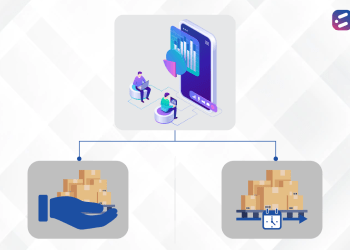A hybrid cloud is a computing environment that utilizes a mix of on-premise servers, private cloud and public cloud services in a customized combination. In other words, a hybrid cloud is a composition of distinct platforms that – while remaining as unique entities – are bound together by standardized or proprietary technology to create an integrated infrastructure.
The basic purpose of a hybrid cloud is to make the most of all environments, choosing to keep some data completely restricted to the four walls of an office/network while enabling others to be accessed remotely.
Here a few basic hybrid cloud models:
- A single cloud provider curates a hybrid package for the organization
- Two or more separate cloud providers come together to provide integrated services with both private and public clouds
- An organization that is already managing a private cloud opts for an additional public cloud service and integrates them
If curated well, a hybrid cloud can bring together the benefits of the private and public clouds in the following ways:
VARIETY
The use of a hybrid cloud means that the organization has a wider set of applications, services and resources to choose from to suit specific business needs and formulate business processes in the most efficient manner.
SECURITY
For all your mission-critical data that you are worried to move to the public cloud and highly sensitive operations that come with strict compliance requirements, the private cloud element of a hybrid cloud provides security. At the same time, by leveraging the public cloud, you get to compartmentalize and manage your workload.
COST-EFFECTIVENESS
By designating certain resources to the cheaper third-party public cloud and keeping only mission-critical data locally or on the private cloud, you can cut down on maintenance costs.
FLEXIBILITY
If you are a business that experiences dynamic workloads or significant spikes and dips in demand when it comes to your services, a hybrid cloud can be instantly scaled up to ensure continuity without hiccups.
REDUCED LATENCY
If your business relies on real-time analytics, then you may need a private cloud to run high volumes of high-speed functions. On the other hand, when it comes to big data analytics, you may need to rely on the highly scalable properties of a public cloud. In this way, a hybrid cloud environment helps you do both.
CALIBRATED MIGRATION
Sometimes, a hybrid cloud can simply be a means of moving to the cloud in a gradual, phased manner. With legacy applications and numerous resources which cannot all be moved to a public or private cloud in a single instance, a hybrid cloud model can give you the space to get comfortable with the new environment step by step while maintaining your on-premise set up as well in parallel, before completely embracing the cloud.
When it comes to a hybrid cloud, the right balance is key. A cloud solutions expert like CloudNow can look into your specific business needs and effectively come up with a hybrid cloud design for you. Get in touch with us today for a free consultation.













